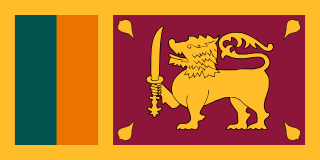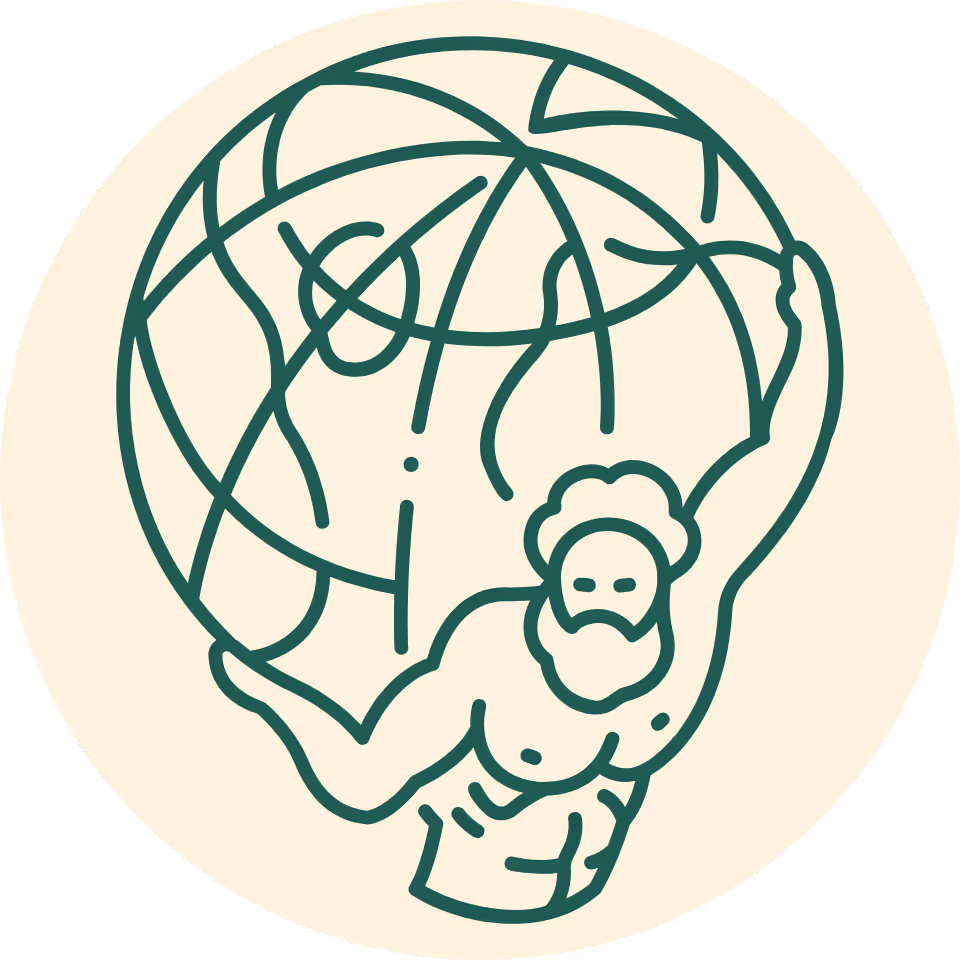Sri Lanka Travel Guide: Essential Tips
Explore Sri Lanka: From the ancient Sigiriya Rock to the vibrant Vesak festival

The 15 Most Searched Questions About Sri Lanka
1. What is the capital of Sri Lanka?
The capital of Sri Lanka is Colombo, a bustling city with a mix of colonial and modern charm.
2. Do I need a visa to visit Sri Lanka?
Most nationalities need an Electronic Travel Authorization (ETA) before arrival. More details in our Documents tab.
3. What currency does Sri Lanka use?
Sri Lanka uses the Sri Lankan Rupee (LKR). More details in our Currency tab.
4. Is Sri Lanka safe for tourists?
Sri Lanka is generally safe for tourists, though caution is advised in crowded areas. More details in our Safety tab.
5. What language is spoken in Sri Lanka?
Sinhala and Tamil are the official languages, but English is widely spoken in tourist areas.
6. What is Sri Lanka known for?
Sri Lanka is known for its tea plantations, ancient ruins like Sigiriya, and beaches like Mirissa. More details in our Top Attractions tab.
7. What is the best time to visit Sri Lanka?
December to March is ideal for the west and south coasts, while April to September is best for the east coast.
8. Is it expensive to visit Sri Lanka?
Sri Lanka is budget-friendly—a daily budget of $40-$60 covers food, lodging, and transport for most travelers.
9. Can I drink tap water in Sri Lanka?
Tap water is not safe—use bottled water, costing $0.30-$0.50 per liter.
10. What are some must-visit places in Sri Lanka?
Must-visits include Sigiriya, Yala National Park, and Galle Fort. More details in our Top Attractions tab.
11. How is the climate in Sri Lanka?
Sri Lanka has a tropical climate: warm year-round (25-32°C) with monsoons from May to September (southwest) and October to February (northeast).
12. Are there festivals in Sri Lanka?
Yes, Vesak (May) and Esala Perahera (July/August) are major festivals with vibrant celebrations.
13. What souvenirs should I buy in Sri Lanka?
Popular souvenirs include Ceylon tea, batik textiles, and gemstones.
14. How do I get around in Sri Lanka?
Trains, buses, and tuk-tuks are common. A tuk-tuk ride in Colombo costs $1-$3 for short trips.
15. What traditional dishes should I try in Sri Lanka?
Try kottu roti, hoppers, and fish ambul thiyal. More details in our Local Cuisine tab.
About Sri Lanka
Sri Lanka, an island nation in the Indian Ocean, spans 65,610 square kilometers and is often called the Pearl of the Indian Ocean. Colombo, the capital, is home to about 750,000 people, part of Sri Lanka’s total population of 22 million (2023 estimate), with ethnic groups like Sinhalese, Tamils, and Moors. Sinhala and Tamil are the official languages, but English is widely spoken in tourist areas. Most nationalities require an Electronic Travel Authorization (ETA) for $20-$50, depending on the duration. In 2023, Sri Lanka welcomed over 1.5 million tourists, drawn by its UNESCO sites like Sigiriya and Polonnaruwa, tea plantations in Nuwara Eliya, and wildlife in Yala National Park. The economy relies on tea exports, tourism, and textiles, with Ceylon tea being a global staple. Sri Lanka’s tropical climate features warm temperatures (25-32°C) year-round, with monsoons from May to September (southwest) and October to February (northeast). Budget travelers can manage on $40-$60 per day, with a local meal costing $2-$5 and a coffee $1-$2. Public transport includes trains ($1-$3 for short routes), buses ($0.50-$2), and tuk-tuks ($1-$3 in Colombo). Cultural events like Vesak (May) and Esala Perahera (July/August) showcase Buddhist traditions with lights and processions. Sri Lanka’s history includes ancient kingdoms like Anuradhapura, colonial rule by the Portuguese, Dutch, and British, and independence in 1948, reflected in sites like Galle Fort. Natural wonders include the beaches of Mirissa and the highlands of Ella. With its blend of history, nature, and warm hospitality, Sri Lanka offers a captivating travel experience.
Visa & Passport for Sri Lanka: Entry Requirements for Travelers
- Passport Requirements: Your passport must be valid for at least 6 months beyond your entry date into Sri Lanka and have at least one blank page for stamps. Children need their own passports—they cannot travel on a parent’s passport.
- Visa Requirements: Most nationalities require an Electronic Travel Authorization (ETA) before arrival, costing $20 for South Asian nationals and $50 for others, valid for 30 days. Apply online at www.eta.gov.lk. Citizens of the Maldives, Seychelles, and Singapore are exempt. Extensions up to 6 months can be applied for at the Department of Immigration in Colombo for $30-$100, depending on the duration. Overstaying incurs a fine of $50 plus $10 per day. You’ll need a passport copy and travel itinerary for the ETA application.
- Other Requirements: No mandatory vaccinations are required, but a yellow fever certificate is needed if arriving from an affected country. Travel insurance covering medical emergencies is recommended, especially for adventure activities like surfing.
Driving in Sri Lanka: Road Rules & Tips for Tourists
- Driver’s License: An International Driving Permit (IDP) is required alongside your national license to drive in Sri Lanka. You’ll also need a temporary local permit from the Automobile Association of Ceylon (AAC) for $25. Car rentals in Colombo start at $30 per day; scooters at $10.
- Road Rules: Drive on the left side of the road. Speed limits are 50 km/h in urban areas and 70 km/h on highways. Seat belts are mandatory, and the legal blood alcohol limit is 0.08%—fines for violations start at 2,500 LKR ($8).
- Road Conditions: Roads can be narrow and congested, especially in rural areas. Monsoon seasons (May-September, southwest; October-February, northeast) bring heavy rain—drive cautiously.
- Transport: Tuk-tuks in Colombo cost $1-$3 for short trips. Trains from Colombo to Kandy cost $2-$5 and take 2.5 hours. Buses to Galle cost $1-$2 and take 2 hours.
- Emergency Number: Dial 119 for police or 110 for medical emergencies.
Currency in Sri Lanka: Using the Rupee for Your Trip
- Sri Lankan Rupee (LKR): The official currency. Banknotes come in denominations of 20, 50, 100, 500, 1,000, and 5,000 LKR; coins are 1, 2, 5, and 10 LKR.
- Currency Exchange: Exchange money at banks or authorized counters in Colombo or Kandy—rates are better than at hotels. ATMs are widely available in cities, with withdrawal fees of 500 LKR ($1.60) for international cards.
- Payment Methods: Carry cash for rural areas and small vendors—small denominations (20-100 LKR) are useful. Cards are accepted in larger hotels and restaurants in Colombo; mobile payments like Genie are growing but not universal.
- Costs: A local meal costs $2-$5, a coffee $1-$2, and a souvenir like Ceylon tea costs $3-$10.
Legal Guide for Sri Lanka: Laws Travelers Should Know
- Local Laws: Drug possession is illegal—penalties include up to 10 years in prison. Public intoxication can lead to fines of 5,000 LKR ($16).
- Cultural Sensitivities: Dress modestly at religious sites—cover shoulders and knees. More details in the Culture & Etiquette tab.
- Photography Restrictions: Photography of military sites or inside certain temples is prohibited—fines for violations start at 2,000 LKR ($6.50). Drones require a permit from the Civil Aviation Authority of Sri Lanka.
- Public Behavior: Public displays of affection are frowned upon. Littering incurs fines of 500 LKR ($1.60).
- Customs Rules: You can bring up to 1.5 liters of alcohol and 200 cigarettes duty-free. Declare cash over $10,000 or its equivalent in LKR.
- Emergency Contact: Dial 119 for police or 110 for medical emergencies.
Travel Safety in Sri Lanka: Staying Safe During Your Trip
- Crime: Petty theft can occur in crowded areas like Colombo—keep valuables secure. Violent crime is rare.
- Road Safety: Roads can be chaotic—hire experienced drivers or use public transport. Avoid night travel in rural areas.
- Health Risks: Tap water is not safe—use bottled water. Dengue fever is a risk during monsoons; use mosquito repellent.
- Natural Hazards: Monsoons (May-September, southwest; October-February, northeast) bring heavy rain and flooding. Tsunami risks exist—follow local warnings.
- Border Areas: The northern areas, once affected by conflict, are now safe but may have remnants of landmines—stick to marked paths.
- Medical Facilities: Nawaloka Hospital in Colombo is recommended for emergencies. Pharmacies are widely available—look for the “Pharmacy” sign.
- Emergency Contacts: Dial 119 for police or 110 for medical emergencies. The US Embassy in Colombo can be reached at +94 11 249 8500.
Culture & Etiquette in Sri Lanka: What to Know
- Greetings: A “Ayubowan” (Sinhala for long life) with a slight bow is a respectful greeting. Sri Lankans are hospitable—accepting tea or snacks shows appreciation.
- Dining Customs: Remove shoes before entering homes or temples. Eat with your right hand—avoid using your left.
- Community Respect: Dress modestly at religious sites—cover shoulders and knees. Avoid pointing with your feet or touching someone’s head.
- Festivals: Vesak (May) celebrates Buddha’s birth with lanterns; Esala Perahera (July/August) in Kandy features elephant processions.
- Language Tips: In tourist areas, you might hear “Istuti” (Thank you in Sinhala). Learning “Ayubowan” is appreciated.
- Social Practices: Tipping is not mandatory but appreciated—5-10% in restaurants or $1-$2 per day for guides and drivers.
Local Cuisine in Sri Lanka: Dishes & Drinks to Try
- Kottu Roti: Chopped flatbread stir-fried with vegetables and meat—$2-$4 per portion.
- Hoppers: Crispy, bowl-shaped pancakes often served with egg—$1-$2 each.
- Fish Ambul Thiyal: Sour fish curry with tamarind, a southern specialty—$3-$5 per serving.
- Ceylon Tea: World-famous black tea, often served with milk—$1-$2 per cup.
- Pol Sambol: A spicy coconut relish, often a side dish—$0.50-$1 per serving.
- Where to Eat: In Colombo, try kottu roti at Pilawoos in Bambalapitiya. In Galle, beachside shacks serve fresh fish ambul thiyal. Both are highlighted in our Top Attractions tab.
Top Attractions in Sri Lanka: Must-Visit Places
- Sigiriya: A UNESCO-listed rock fortress with ancient frescoes and panoramic views. Search for tours on Tiqets.
- Yala National Park: A wildlife haven with leopards, elephants, and birds. Search for tours on Tiqets.
- Galle Fort: A colonial fortress with cobblestone streets and ocean views. Search for tours on Tiqets.
- Kandy: Home to the Temple of the Tooth Relic and the Esala Perahera festival. Search for tours on Tiqets.
- Ella: A highland town with tea plantations and scenic hikes like Ella Rock. Search for tours on Tiqets.
- Mirissa: A beach destination known for whale watching and surfing. Search for tours on Tiqets.
- Where to Eat: In Colombo, Pilawoos in Bambalapitiya serves authentic kottu roti. In Galle, beachside shacks offer fresh fish ambul thiyal.
Flights to Sri Lanka: Travel Options
Bandaranaike International Airport (CMB) in Colombo is the main gateway, with flights from Dubai, Singapore, and Delhi. A taxi from CMB to Colombo costs $10-$15 and takes 45 minutes. Domestic flights to Ella cost $50-$80 and take 30 minutes.
Create Your Packing List for Sri Lanka
Travel Tips for Sri Lanka
- Connectivity: SIM cards from Dialog or Mobitel offer 10-15 GB for $5-$10, available at the airport. Wi-Fi is common in hotels but can be slow in rural areas.
- Health Prep: Hepatitis A, typhoid, and tetanus vaccines are recommended. Carry mosquito repellent for dengue-prone areas.
- Weather Prep: Pack light clothing for the tropical climate, but include a rain jacket for monsoon seasons (May-September, southwest; October-February, northeast).
- Navigation: Use apps like PickMe for booking tuk-tuks in cities. Trains ($1-$3) are scenic and affordable for intercity travel, like Colombo to Kandy.
- Peak Season: December to March is busy on the south and west coasts—book accommodations and tours in advance, especially for Yala safaris.
